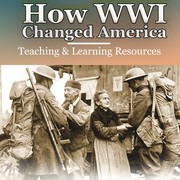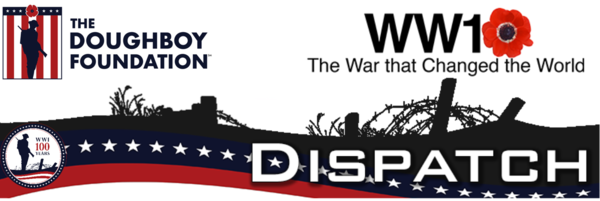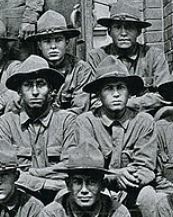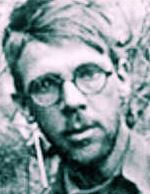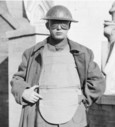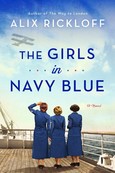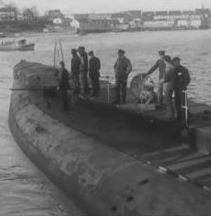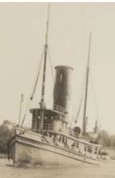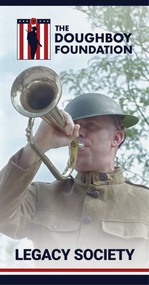|
|
|
|
December 2022
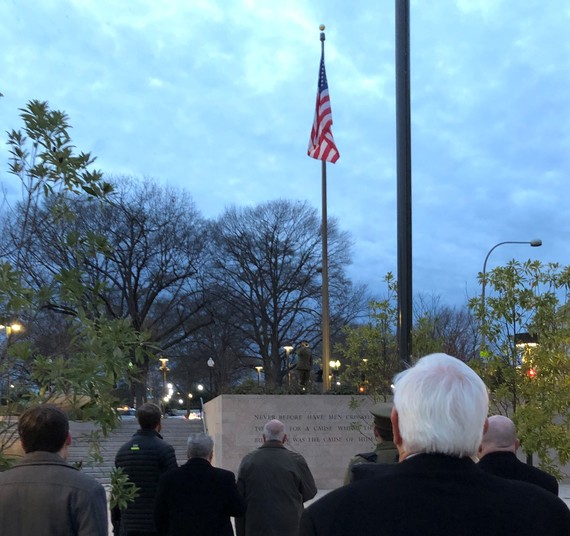 On Wednesday, December 14, Daily Taps at the National World War I Memorial in Washington, D.C. honored the World War I Centennial Commission and Doughboy Foundation volunteers who keep faith with the Doughboys. Daily Taps is a program supported by donations honoring those who have served or are serving. It especially commemorates the 4.7 million men and women who put on an American uniform in WWI in the name of freedom and Democracy to help end a global conflict that had engulfed and ravaged the entire world. Click on the image to see Daily Taps video, and learn how you can support the program.
|
|
Seeing Tina Home: A WWI Christmas Story
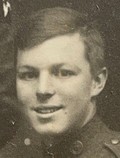
Eighteen-year-old E. Reynold Thomas joined the U.S. Marine Corps in 1918. Assigned to the 55th Company, 2nd Battalion, 5th Marine Regiment, he saw combat at Chateau-Thierry, Belleau Wood, Soissons and Blanc Mont. When the Armistice was signed on November 11, 1918, exactly one week after his 19th birthday, Thomas and his unit were assigned to occupation duty in Germany. In the small town of Neuwied, Thomas chanced to meet "the loveliest enemy a soldier ever had" that Christmas. Click here to read Thomas's entire Christmas story (found after his death and annotated by his daughter), and learn about the post-holiday risky business that ultimately helped provide more "divine evidence of the power of the Christmas spirit."
|
43 WWI Soldiers Among Unclaimed Remains of 133 Veteran And Relatives Brought to Final Rest in Washington State Veterans Cemetery

The National WWI Museum and Memorial has announced the retirement of longtime senior curator, Doran Cart. After 33 years of service at the Museum and Memorial, Cart will retire on December 31, 2022. Under Cart’s stewardship since 1990, the museum's collection has grown to be the most comprehensive collection of WWI objects in the world and the Museum and Memorial has grown into a critically acclaimed international destination. Click here to read the entire story, and learn more about the amazing professional career of Doran Cart.
|
Sylvanus Morley: Archeologist...
and World War I Espionage Agent 53

"As a writer, a veteran, and a descendant of a World War I Doughboy, I remember as a little boy the stories told sitting around my grandmother’s kitchen table, while she baked cornbread in an old iron skillet for supper, of my grandfather, whom I had never met, and how they had met and married before he deployed overseas in the Great War with American Expeditionary Forces." So says author Craig deSteiguer talking about his book that describes the shattering wartime experiences and postwar redemption of his grandfather, Pvt. Horace Merriman. Click here to read more, and learn how though "wounded in battle and losing his ability to ever speak again," Merriman learned to "express his life’s feelings through poetry."
|
Comparing American and German Remembrance Based on Memorials
for the Fallen
World War I Body Armor:
Plate Mail In The Trenches
“Turn the Keys and the Party’s Over.”
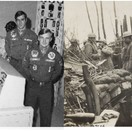
After writing and publishing his new book World War I (56th Engineers) and Great Depression Letters of Ralph W. Green, U.S. Air Force veteran and author John Stibravy became "very interested in the daily lives of our Soldiers prior to, during, and after the War." In correspondence, he mentioned that "it happens by chance that I've carefully crafted an editorial about WWI for publication and have not published it." Click here to read his intriguing editorial, written from the perspective of someone who has had his finger on a the launch button of nuclear missiles, concerning the "strong similarities between now and pre-WWI," and how people should be thinking about those similarities.
|

A widespread lack of understanding around the global impact of World War I and life at the time in rural South Dakota inspired Mount Marty University (MMU) history professor, Dr. Rich Lofthus, to write a book, “From Wentworth to the Western Front,” which has been featured in a C-SPAN program. “World War One is overlooked…and not a lot of attention has ever been paid to what happened in places like rural South Dakota during the war,” Lofthus says. Click here to learn more about the new book, and learn how to view the cable television program about it.
|
The Battle Of Nauset Beach:
Inside the Little-Known 1918 German Naval Bombardment of Cape Cod
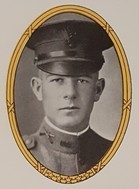
A man is only missing if he is forgotten.
Our Doughboy MIA this month is 1st LT Leonard Charles Aitken. Born in Reno, Nevada on 10 June 1897, Leonard Aitken grew up in California, where he joined the California National Guard at 18 years of age. When the trouble broke out with Mexico, he reported for duty in June, 1916 and served along the border with the hospital corps, attending elements of what would, a year later, become the 160th Infantry, 40th Division.
Following America’s declaration of war on Germany, on 7 April 1917, Aitken reported to the Officers Training School at San Diego and upon graduation shipped to France in August, 1918 as a 2nd lieutenant with the 158th Infantry, 40th Division. There, on 20 October 1918, he was sent as a replacement officer to the 372nd Infantry, 93rd Division, then holding a section of the line in the Alsace sector near Hill 607.
On 7 November, while leading a squad of men on a night patrol, they captured several prisoners but unknowingly walked into the line of fire of a German machine gun nest, which opened up on them, killing or capturing all but two enlisted men of the patrol and freeing the prisoners. Without hesitation Lieutenant Aitken immediately advanced against the position with the intent of eliminating it, but he was shot twice in the chest and killed in the endeavor. His date of death is given as 8 November 1918.
Following the Armistice, it was learned that German officers had seen that Aitkens was buried with full military honors in the church yard of the tiny hamlet of La Paive, some 40 miles east of Epinal, France. Nothing further is known at this time.
Would you like to help solve Lt. Aitken’s case? Why not Give to Doughboy MIA and help us make a full accounting of the 4,423 American service personnel still listed as missing in action from WWI. Make your tax deductible donation now, with our thanks.
|
Merchandise from the Official
Doughboy Foundation WWI Store

- Classic white relaxed golf cap
- Low profile six panel unstructured
- Standard pre-curved visor
|

- Washed chino twill
- Fabric strap with antique brass sliding buckle
- The front features our beautifully embroidered poppy design
- Doughboy Foundation logo embroidered on side
- Decorated in USA
- Cap imported, TAA compliant
- First Time in the Doughboy Shop!
|
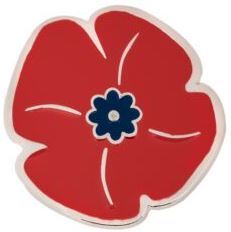
Back in stock!!
- Exclusive Commemorative WW1 Poppy Lapel Pin
- Soft enamel color design
- Approx. 1.5 inch in dia.
- Standard military clasp
|
 Lest We Forget: The Great War World War I Prints from the Pritzker Military Museum & Library. One of the nation’s premier military history institutions pays tribute to the Americans who served and the allies they fought beside to defeat a resourceful enemy with a lavishly illustrated book. It is an official product of the United States World War One Centennial Commission and is a tribute to those who served in the Army, Navy, Marine Corps, and what would become the Air Force. It serves as a lasting reminder that our world ignores the history of World War I (and the ensuing WWII) at its peril―lest we forget.
Honoring the Doughboys: Following My Grandfather's World War I Diary is a stunning presentation of contemporary photographs taken by the author that are paired with diary entries written by his grandfather, George A. Carlson, who was a soldier in the U.S. Army during World War I. Jeff Lowdermilk followed his grandfather's path through France, Belgium, Luxembourg, and Germany and returned with these meticulously crafted photographs and his own engaging stories that bring the diary to life for contemporary readers. Lowdermilk's passion for World War I and military history began as a young boy when he listened to his grandfather tell his stories about serving as an infantryman-- a "Doughboy"--in Europe during the Great War.
This and many other items are available as Official Merchandise of the Doughboy Foundation.
|
|
|
|
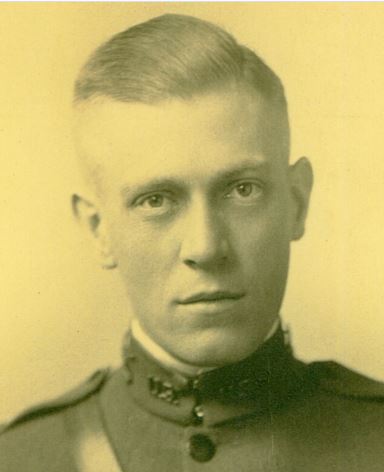
Submitted by: Michael Marshall Zacher {Nephew}
Vernon Benjamin Zacher was born around 1897. Vernon Zacher served in World War 1 with the United States Army . The enlistment was in 1917 and the service was completed in 1919.
Story of Service
Vernon Benjamin Zacher was born July 7, 1897 in Barnesville, Minnesota. He was raised in Jamestown, North Dakota and enlisted in Company H, 164th Infantry, North Dakota National Guard February 12th, 1915.
His guard unit was called into Federal service for World War I, March 26th, 1917. Sgt. Zacher with Company H departed for France December 15th, 1917 aboard the troop ship Leviathan.
Vernon attended Officer Candidate School in Langres, France receiving a commission as 2 LT July 8th, 1918. He was discharged from the National Guard and transferred to the Regular Army, 359th Infantry, 90th Division, where he served until the end of the war.
Vernon participated in the St. Mihiel Offensive and the Meuse-Argonne Offensive. He was severely wounded November 1st, 1918 near Bantheville, France. He was awarded the Distinguished Service Cross for extraordinary heroism as well as the French Legion of Honor (chevalier) and the French Croix de Guerre with palm. The citation reads:
"Without regard for his own safety, Lieutenant Zacher led his platoon to the capture of two machine guns which were holding up the advance of the battalion. Although painfully wounded, he would not stop until his objective had been reached".
|

|
|
|
|




